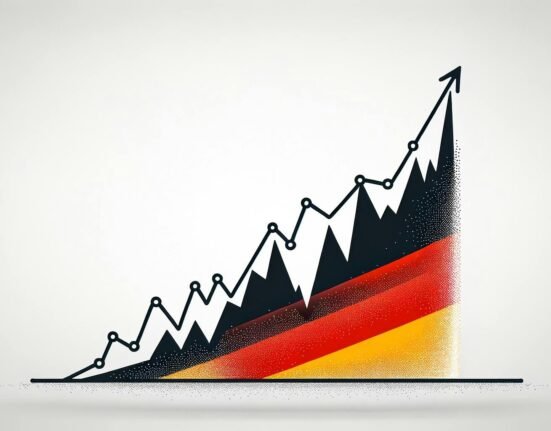Sixty years ago this September, the Journal of Finance published a dense paper on an obscure topic by an unknown academic called William Sharpe. It bombed.
The first version had actually been rejected by the JoF two years earlier for containing too many assumptions, and the initial reaction to Capital Asset Prices: A Theory of Market Equilibrium Under Conditions of Risk was not so much hostile as non-existent.
As Sharpe later recalled:
I said at the time to myself, “This is the best paper I’m ever going to write” . . . I figuratively sat by the phone because that’s how you got communication in those days, or letters, and the phone didn’t ring. I didn’t get many letters, and I thought, “Man, I have just written the best paper I’m ever going to write, and nobody cares.”
However, the 1964 paper would end up proving one of the most revolutionary in the history of finance, introducing Sharpe’s capital asset pricing model to the world, pushing the concepts of alpha and beta into the lingua franca of money, and ultimately birthing what is today a multitrillion dollar passive investing industry.
Among all this other good stuff, the paper posited the idea of a “market portfolio” that is — at least in theory — the ultimate trade-off between risk and reward by encompassing every investable security. As Sharpe’s mentor Harry Markowitz had already showed, diversification is the only free lunch in finance.
For practical reasons, this has often just meant the entire stock market, and maybe also the bond market. After all, these are the two dominant financial assets that you can use to construct a portfolio.
But for completists, the market portfolio really should include EVERYTHING: All stocks; all bonds; global real estate; private companies; commodities from gold to guava; bank loans and private debt; trade receivables and student debt; timberland and salt mines; hell, maybe even art, stamps, wine, and vintage Pokémon cards. Total diversification, in other words. The ultimate free lunch.
Anyway, this is a reeeeeeaally long-winded way of introducing a cool new paper by Ronald Doeswijk and Laurens Swinkels that recently landed in FT Alphaville’s inbox. This attempts to map out a true(ish) market portfolio, and estimate its monthly returns, volatility, drawdowns and so on.
It’s not quite a purist’s market portfolio (it doesn’t include any Pokémon cards or formaldehyde-soaked sharks). But it is an impressively broad $150tn portfolio of global stocks, bonds, real estate, leveraged loans, commodities and even (sigh) cryptocurrencies.
Crucially, this paper uses monthly pricing from 1970 to 2022. Previous papers by Doeswijk, Swinkels and Trevin Lam constructed a global market portfolio from annual data across 1990-2012 and 1960-2017. More granular data allow a deeper investigation. As the authors write:
Standard financial economics theory prescribes investing in a diversified ‘market portfolio’ comprising of all assets. What is the risk of this market portfolio? With an unrivalled global dataset that basically comprises all investable assets and is based on market prices at monthly frequency, we examine the global market portfolio’s risk and reward characteristics over more than half a century.
First off, we should explore what the market portfolio looks like. Because one of the biggest issues with these kinds of “everything indices” is deciding what components to throw in and how to weight them. Real estate is the biggest global asset class, but most of it is in practice uninvestable, for example.
The Doeswijk-Swinkels paper simply uses actually investable assets and weights them by market size, so equities (both public and private) make up the biggest chunk followed by bonds. Here’s how the allocations have waxed and waned over the past half-century.

This is obviously an imperfect solution.
Real estate should really be a much larger slice of the pie, especially if you include land and infrastructure. Probably the largest. Defined more broadly, commodities should probably also be bigger.
But as a really broad measure of viable investment assets across the world this is fine. Introducing more private assets would in theory make it more accurate, but in practice the data quickly gets iffy as hell, and a monthly time series would be almost impossible.
Here’s what the cumulative excess returns look like, broken down by components.

So what does this mean in practice?
Well, the headline finding is that the global market portfolio has generated excess returns of 0.3 per cent per month between 1970 and 2022 (ie returns above that of cash). This is hardly a surprise. Over time, taking risks should produce returns. The riskier the assets the greater the return, as you can see from the above chart.
The interesting aspect of the paper is the nuance that the monthly data yields, for example by looking at the volatility of returns, and how each component and the combination stack up.
When it comes to the Sharpe ratio — another later legacy of that 1964 paper — the Doeswijk-Swinkels global market portfolio only does slightly better than equities over the period studied, and does worse than corporate bonds.
However, Sharpe ratios have well-known weaknesses — mostly the reliance on volatility as a proxy for risk. As William Goetzmann, Jonathan Ingersoll, Matthew Spiegel and Ivo Welch showed over 20 years ago, that’s fairly easy to manipulate.
Or as Roman Roy puts it:

If you look at the rolling 10-year Sharpe ratio of the market portfolio then it outperforms each of its underlying asset class components. Moreover, what most investors really care about is drawdowns — nasty, career-wrecking, payout-curtailing declines that are both big in size and duration. And this is where the market portfolio shines.
Well, maybe not shines, but at least looks a lot better.

This matters, as the authors point out:
The risk literature suggests that investors care about the preservation of their capital. Monthly return data allows us to estimate drawdown risk much more accurately. If we adjust the average returns by drawdowns instead of volatility, the global market portfolio has the highest reward for risk, and the shortest maximum drawdown period.
For now, getting close to this kind of global market portfolio is still only feasible for the largest and most sophisticated institutional investors.
But in a world where financial engineers can churn out triple-leveraged single-stock ETFs and bridge loan-based SRTs, someone will surely eventually find a way to bottle and sell a cheap and broad market portfolio.







